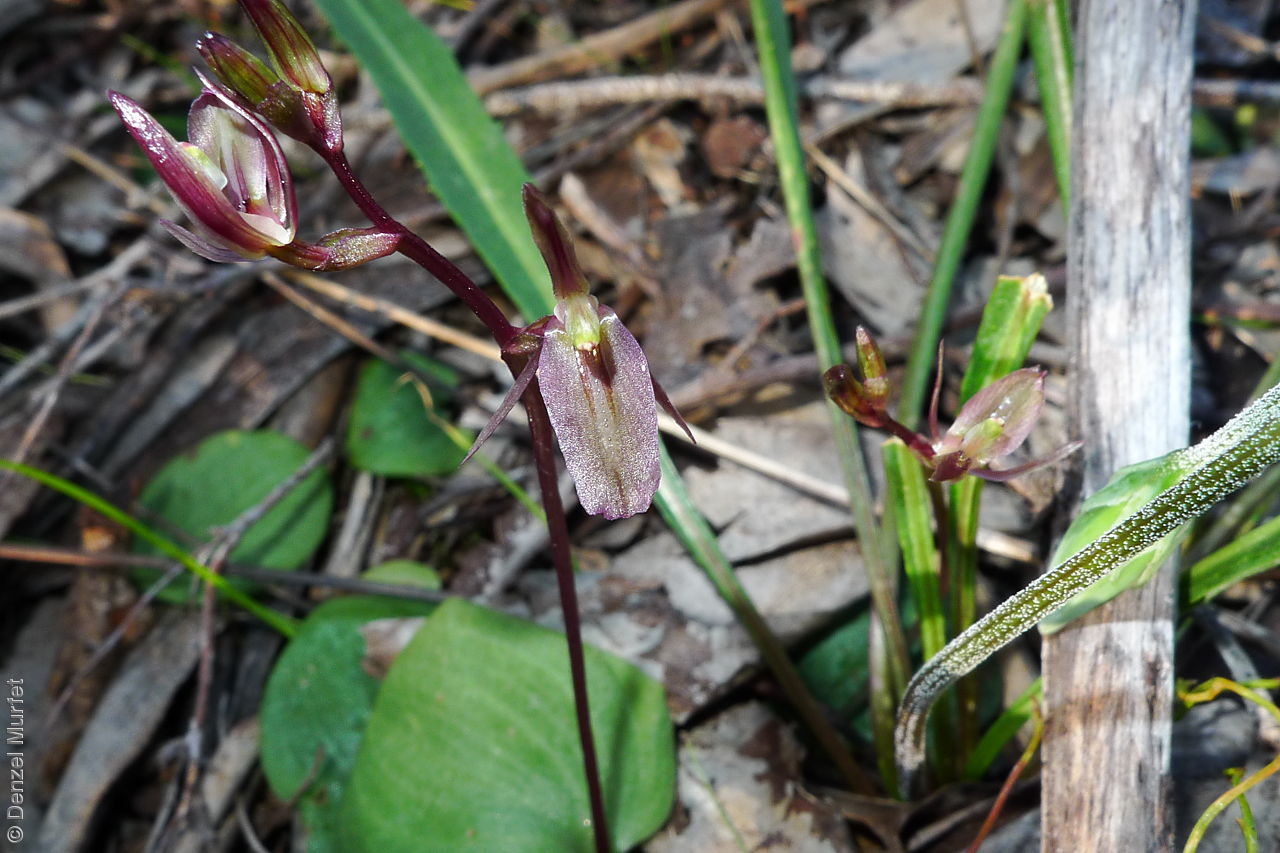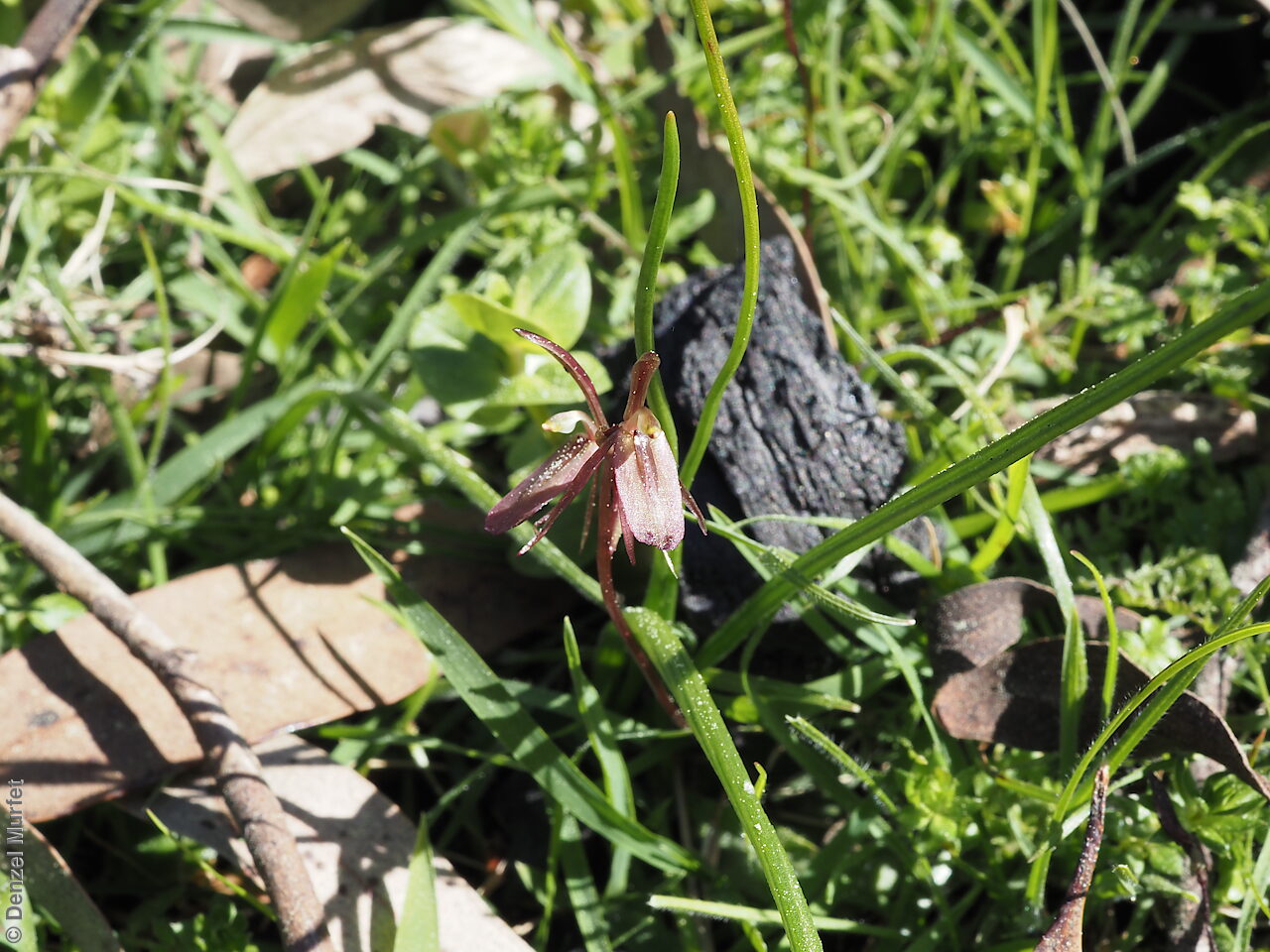










Botanical art
Prior names
Acianthus reniformis var. reniformis
Caladenia reniformis
Common names
Spring-flowering Gnat-orchid
Small Gnat-orchid
Etymology
Cyrtostylis from the Greek 'kyrtos' meaning curved or swollen and 'stylis' meaning column, referring to the fluted enlargement of the column below the stigma. Reniformis from the Latin 'renis' meaning kidney and 'forma' meaning shape, alluding to it's kidney-shaped leaves.
Distribution and status
Found in the Flinders Ranges, Kangaroo Island, Mount Lofty Ranges and the South-east in South Australia, growing in heathland and open woodland forming small to large, dense colonies. Also found in Queensland, New South Wales, Victoria and Tasmania. Native. Common in South Australia. Rare in Queensland. Common in the other States.
Herbarium regions: Flinders Ranges, Northern Lofty, Murray, Southern Lofty, Kangaroo Island, South Eastern, Green Adelaide
NRM regions: Adelaide and Mount Lofty Ranges, Kangaroo Island, Northern and Yorke, South Australian Arid Lands, South Australian Murray-Darling Basin, South East
AVH map: SA distribution map (external link)
Plant description
Small terrestrial orchid with a single kidney-shaped, heart-shaped or almost rounded leaf to 40 mm long and 30 mm wide, grey-green to blue-green above with whitish veins, lighter and crystalline beneath. Flowers 1-6, reddish-brown, maroon or rarely verdant-green along a stem to 150 mm high. Dorsal sepal is erect and curved forward, linear to lance-shaped, to 13 mm long and 2 mm wide. Lateral sepals linear, to 11 mm long and 1 mm wide and curve forwards or downwards. Petals similar in size and shape to the lateral sepals and curve downwards. Labellum oblong, to 12 mm long and 5 mm wide and shelf-like with a few serrations near its pointed tip. Flowering between July to October. Fruits are brown papery ellipsoid capsule, reddish when immature. Seeds are very small, golden-brown, ellipsoid with a long cylindrical translucent brown mesh-like covering.
Seed collection and propagation
Collect seeds between September and December. Collect fat capsules as they start to dry and turn brown. Pods will split and release the seeds quickly and will require monitoring. To increase the chances of collecting mature pods, it is recommended that a small breathable bag (ie.Organza bags) be used to enclose the developing capsules. Place the capsules in a container that will hold fine seeds, and leave to dry for a few weeks or until the capsules split.Then carefully hold the capsule and tap it gently to release the seeds. Store the seeds with a desiccant such as dried silica beads or dry rice, in an air tight container in a cool and dry place or in liquid nitrogen.